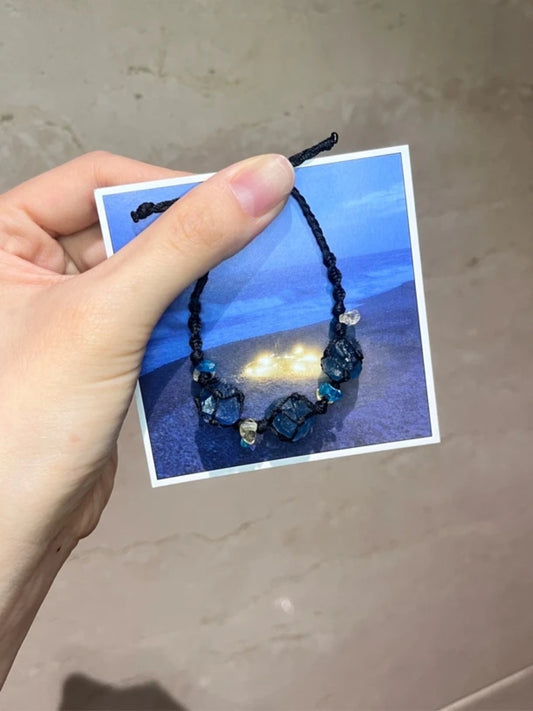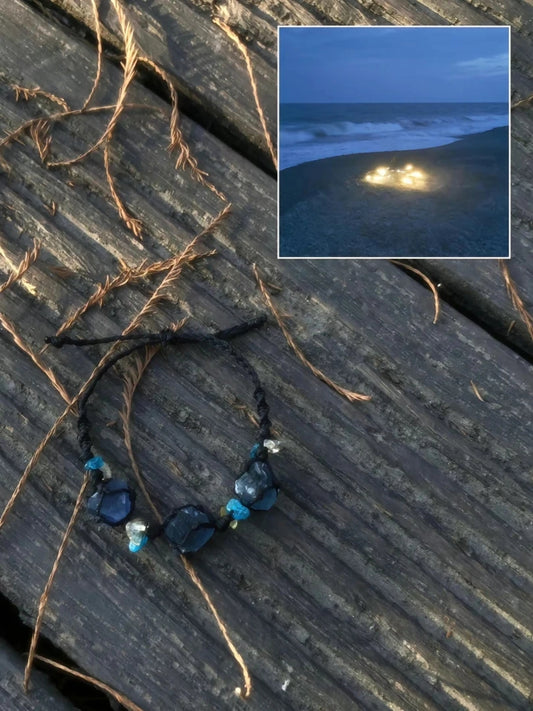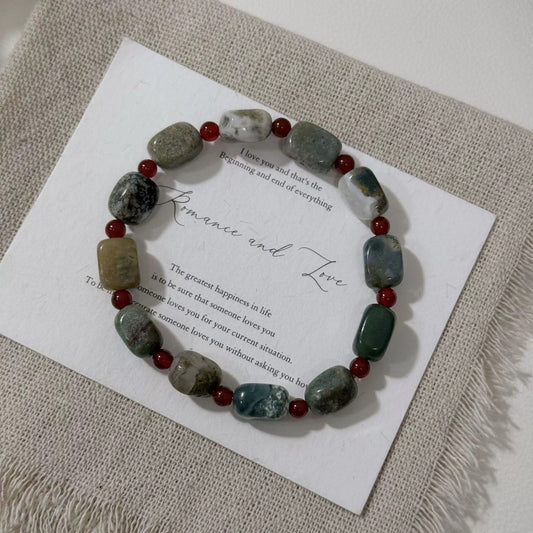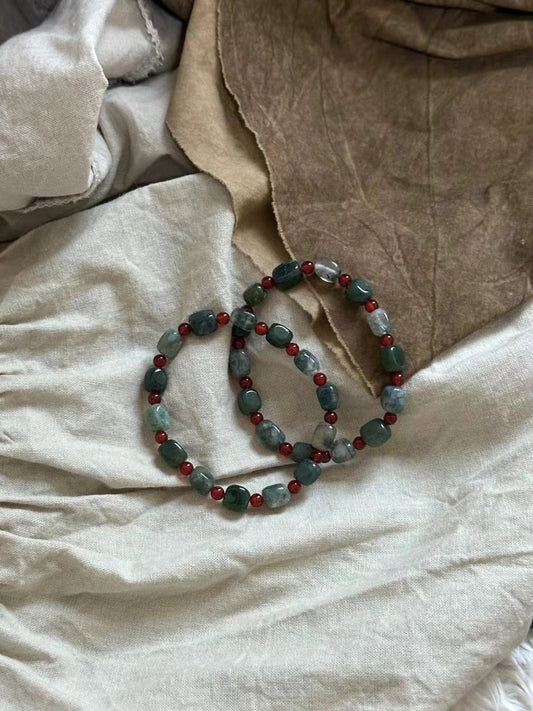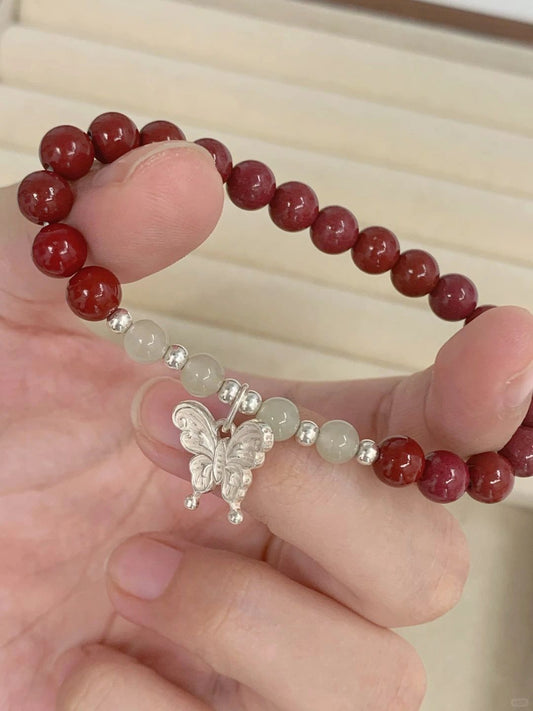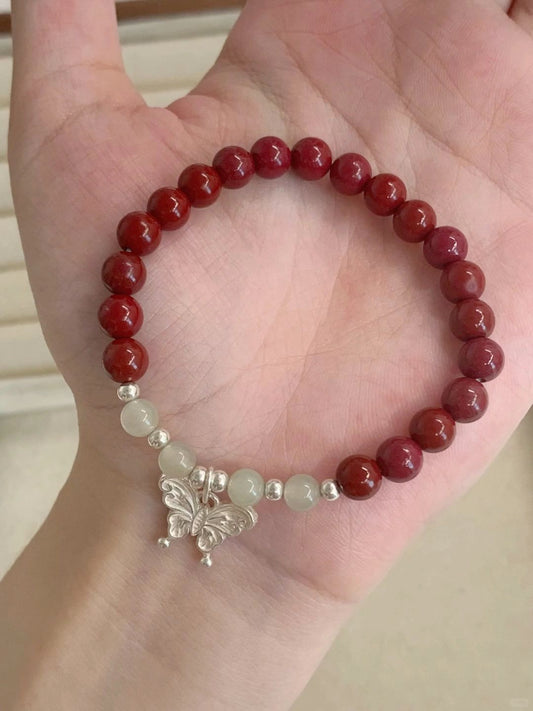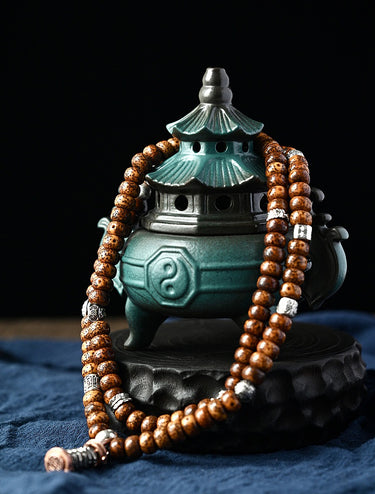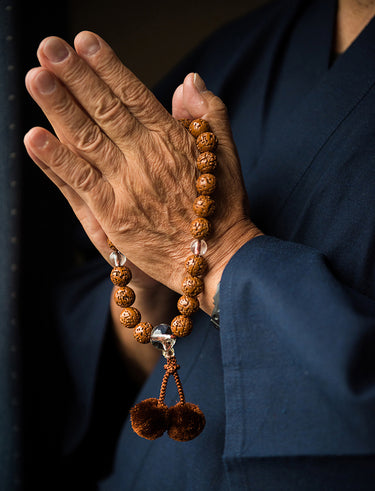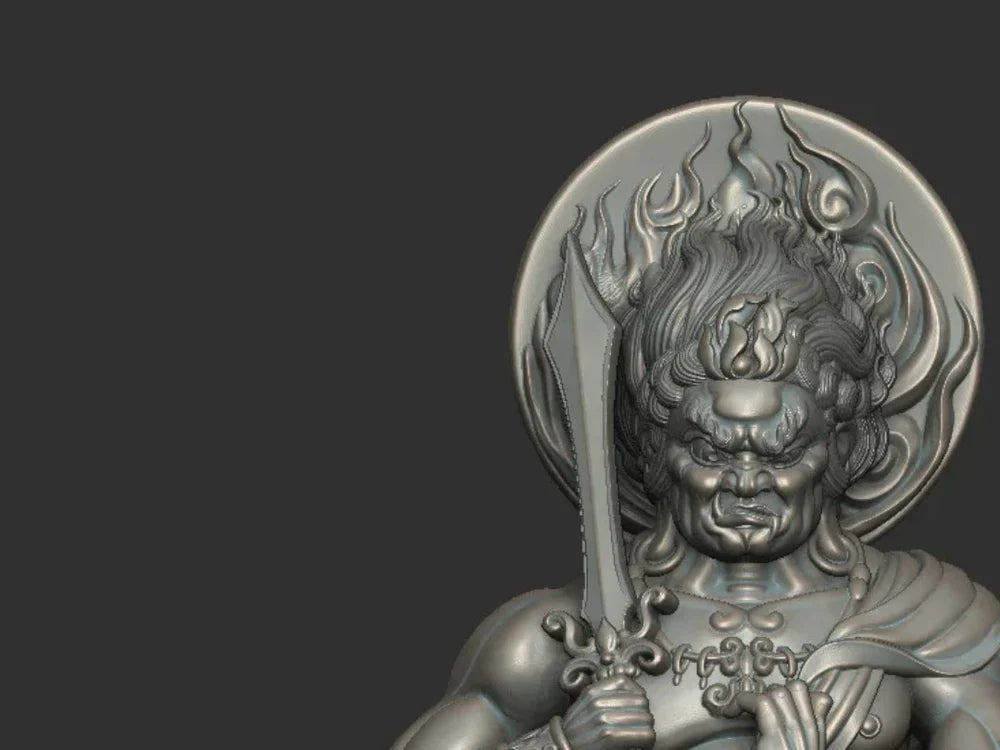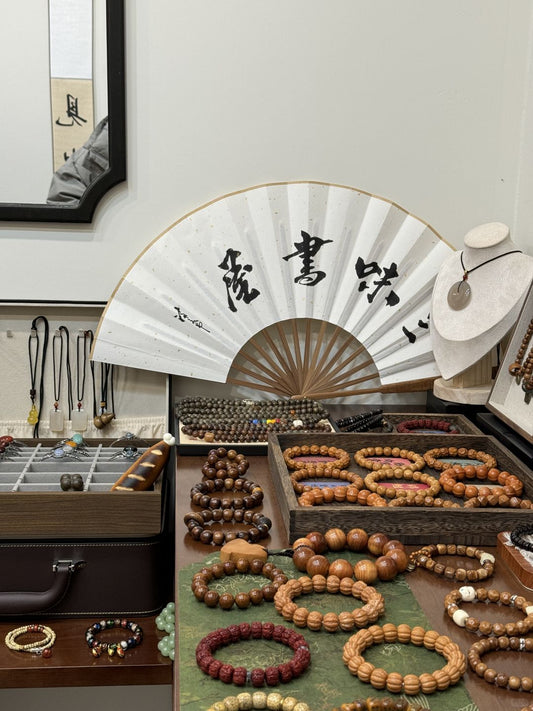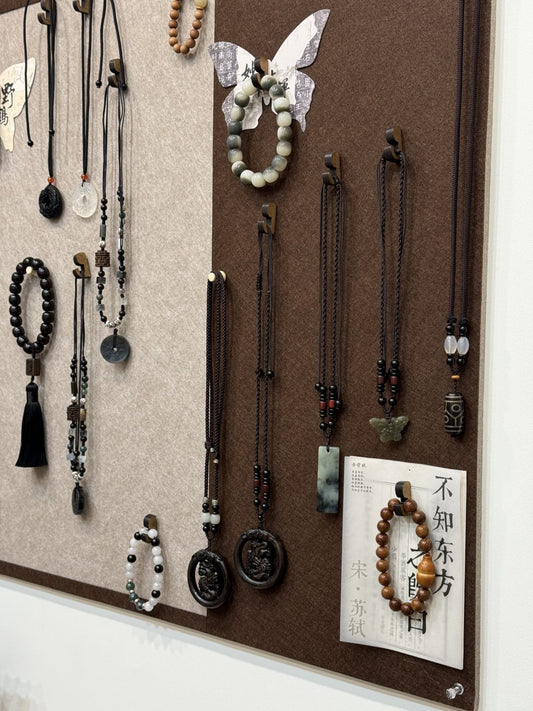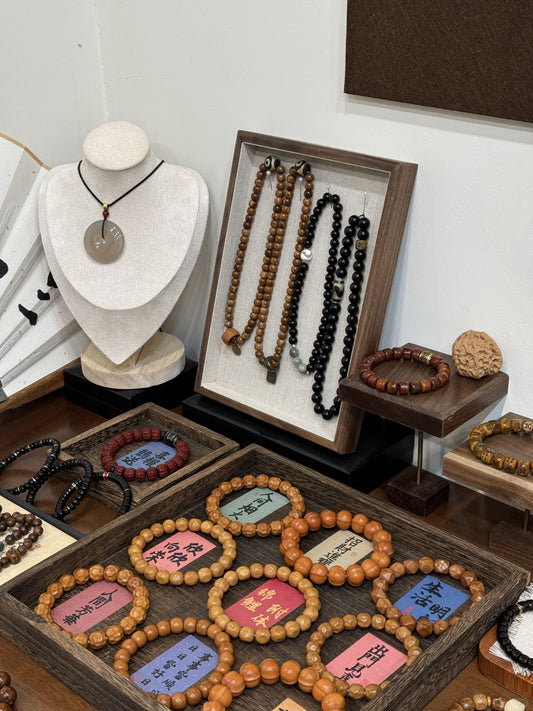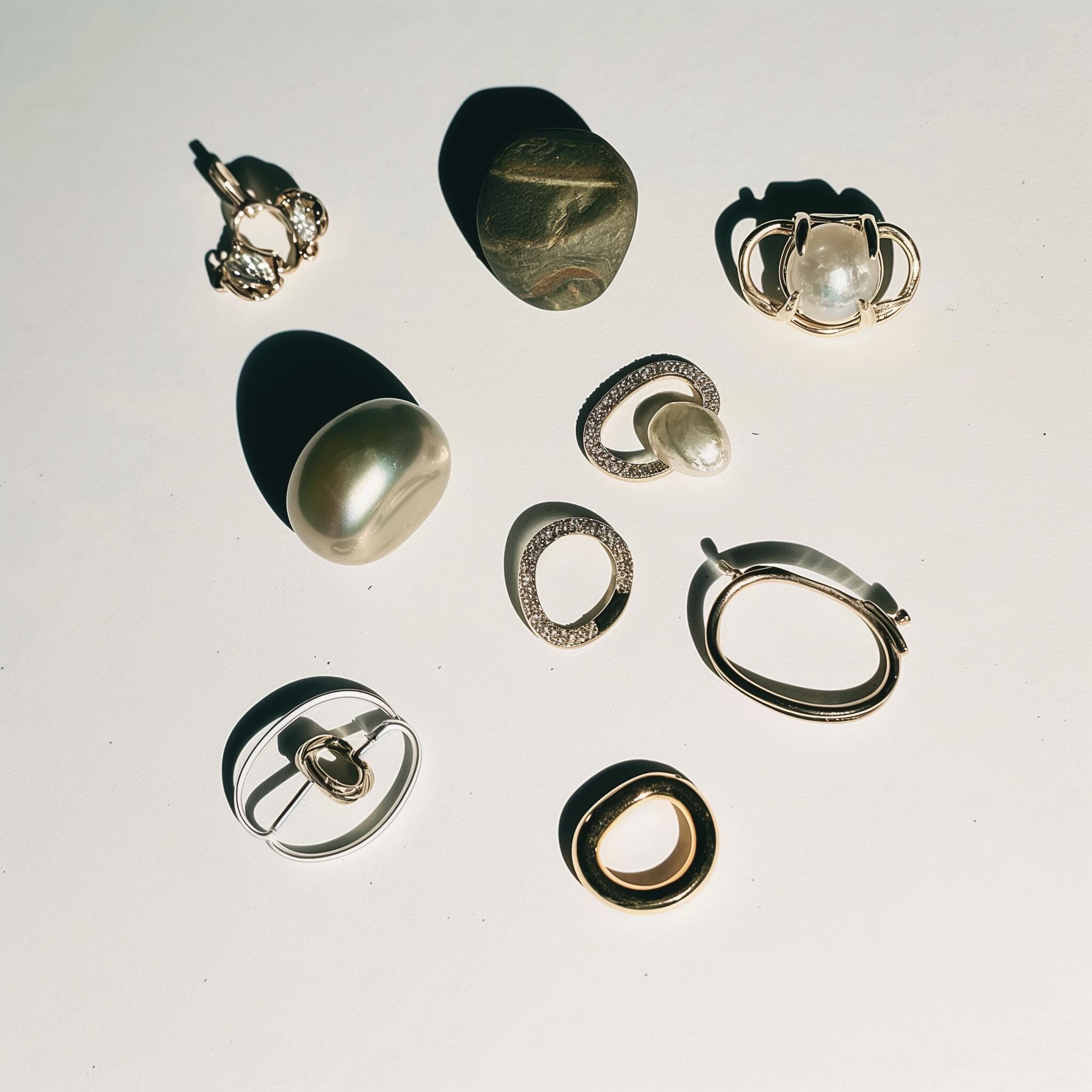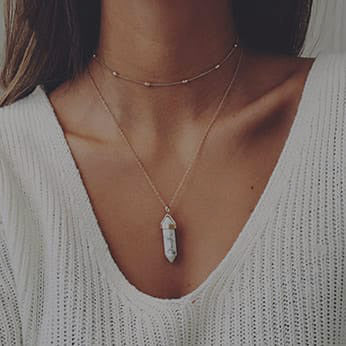From Warrior to Protector: The 1,200-Year Evolution of Acala’s Sword
Acala (Fudo Myo-o), known in Tibetan as Vajra Ishta, holds a unique place in Tibetan Buddhism as the Immovable Protector. Central to his iconography is the sword—an emblem that has evolved over twelve centuries. Beyond its physical form, Acala’s sword serves as a potent metaphor: it doesn’t merely cut through enemies but severs ignorance, anger, and attachment. In this article, we’ll explore how Acala’s weapon transformed from the simplistic straight blade of the early Tubo (Tibetan) era into elaborate Ming/Qing dynastic scroll-pattern designs, and finally, into the sleek, abstract interpretations found in contemporary Acala jewelry. Along the way, we’ll unpack the philosophical meaning behind “weapon” symbolism in Tibetan Buddhism and compare a 17th-century thangka of Acala from the Metropolitan Museum of Art to today’s silver pendants.

1. Tubo Origins: The Straight Blade of Early Tibetan Acala
Historical Context
-
Tubo Dynasty (7th–9th centuries): When Buddhism first flourished in Tibet, ritual objects were straightforward and functional.
-
Sword Design: Early Acala swords were simple, straight-edged blades, often fashioned from iron or steel. The emphasis lay on the sword’s ritual potency rather than ornate decoration.

Craftsmanship and Function
-
Material & Forging: Tibetan blacksmiths forged these swords with basic forging techniques—hammering and folding iron—without extensive embellishment.
-
Ritual Use: Monks used such plain blades in consecration ceremonies to symbolically “cut through” spiritual obstacles. The visual impact was austere, reflecting Acala’s uncompromising nature.
Symbolic Emphasis
-
Cutting Delusion: Even at this early stage, the sword’s primary meaning was to slice through ignorance (moha) and attachment (raga), not to engage in actual combat.
-
Immovable Resolve: Acala’s unwavering stance—often depicted standing firm atop fiery flames—paired with a straight blade, visually conveyed steadfast protection.

2. Ming & Qing Refinements: Scroll Work and Floral Rinceau Patterns
Artistic Flourishes
-
Ming (1368–1644) & Qing (1644–1912) Eras: As Tibetan patronage expanded under Mongol and Manchu influence, artisans introduced decorative motifs—particularly the scrolling or “rinceau” pattern familiar in Chinese metalwork.
-
Design Characteristics: Blades became embellished with winding floral scrolls, lotus petals, and clouds engraved or inlaid with gilding. Rinceau patterns on the guard and spine echoed contemporary palace art.
Materials & Techniques
-
Mixed‐Metal Inlays: Artisans often combined silver and brass, using gold or copper inlays to highlight swirling scrolls along the blade’s length.
-
Relief Engraving: Carving in low relief allowed for intricate cloud and vine motifs, elevating the sword from a mere ritual implement to a work of devotional craftsmanship.
Philosophical Layer
-
Symbolic Duality: The intertwining scrolls—organic, flowing forms—contrast with the rigid blade, symbolizing how compassion (karuṇā) and wisdom (prajñā) coexist within Acala’s wrathful appearance.
-
Spiritual Versus Physical Combat: While the sword remained nonviolent in practice, its ornate decorations underscored the idea that outer beauty serves a higher inner purpose: unshakeable resolve guided by compassion.

3. Modern Abstraction: Acala’s Sword in Contemporary Jewelry
Simplified Forms
-
21st-Century Designs: Today’s Acala pendants and charms often distill the sword to its essence—bold, minimalist lines or subtle geometric hints—allowing wearers to carry its protective energy in everyday life.
-
Sterling Silver & Blackened Finishes: Modern Tibetan silversmiths favor S925 silver that’s either polished to a high shine or patinated for an antique look. The sword is suggested through negative space or a simplified silhouette.

Cultural Continuity
-
Spiritual Utility: Much like ancient swords that protected monasteries in ritual dramas, today’s pendants serve as talismans—“ritual-grade” jewelry that supports focus and mental clarity.
-
Wearable Practice: Rather than brandish a physical blade, modern practitioners use a pendant’s presence as a reminder to “cut” through distractions. This aligns with meditation research showing that tactile objects can anchor attention.
4. Acala in the Metropolitan Museum Thangka: A 17th-Century Glimpse
The Met’s 17th-Century Thangka
-
Visual Analysis: The Metropolitan Museum of Art houses a striking 17th-century Tibetan thangka depicting Acala wielding a broad straight blade, encircled by flames. The hilt and guard exhibit rinceau floral motifs reminiscent of Qing-era metalwork.
-
Comparative Insights: When we place this thangka next to a modern Mabuge Acala pendant, the evolution is clear:
-
Sword Shape: Straight and functional in the thangka, versus stylized, abstracted forms in jewelry.
-
Ornamentation: Rich, colorful scroll-work painted around the blade in the 17th century contrasts with the minimal, polished silver of contemporary designs.
-
Iconography: Acala’s fierce expression remains consistent, underscoring the lasting significance of his protective vow.
-

Why It Matters
-
Historical Continuity: By studying the 17th-century thangka, we see how artisans balanced devotional rigor (flames, fierce visage) with aesthetic refinement (floral scrolls on the blade).
-
Modern Inspiration: QiLing Aura’s jewelry designers draw on these paintings to craft pendants that are both historically rooted and adapted for daily wear. Each new piece implicitly carries forward centuries of ritual symbolism.
5. The Sword as Living Symbol: Philosophy Behind the Blade
Cutting Through Delusions
-
Tibetan Terminology: In Tibetan Buddhism, Acala’s sword is called “zhi khrab gdong” (ཞི་དྭགས་གདུང་) meaning “trapped by peace”—a paradoxical phrase that reminds practitioners true calm arises only after confronting inner turmoil.
-
Philosophical Metaphor: Unlike a battlefield weapon, this sword “cuts” through internal obstacles—anger, greed, and ignorance—aligning with Mahayana goals of compassion and wisdom.
Weapon Versus Protector
-
Nonviolent Symbolism: Although depicted wielding a blade, Acala enacts “upaya” (skillful means) rather than physical violence. His wrathful appearance serves the “bodhicitta” (awakening mind) by expelling negativity.
-
Protector Role: Today’s Tibetan protector deity jewelry uses simplified sword imagery to remind wearers that protection can be both external (feeling secure) and internal (mental resilience).
6. Conclusion: Carrying Acala’s Legacy in Modern Life
From the early Tubo straight blade to ornate Ming/Qing rinceau swords and now to minimalist silver charms, Acala’s weapon has adapted to changing artistic tastes and spiritual needs. But through every era, the sword’s core function remains unchanged: it symbolizes the cutting of delusion and the protection of pure awareness. By wearing an Acala pendant, contemporary practitioners honor centuries of Tibetan craftsmanship while carrying a living symbol of inner strength and compassion.
Whether you meditate with a stylized silver blade resting near your heart or simply glance at its hilt as a reminder to “cut through” daily distractions, Acala’s sword continues to forge a bridge between warrior-like resolve and boundless protection. In this way, the 1,200-year evolution of Acala’s sword becomes not just an art-historical journey but a living practice—one you can wear, hold, and let inspire every mindful step.









































































































